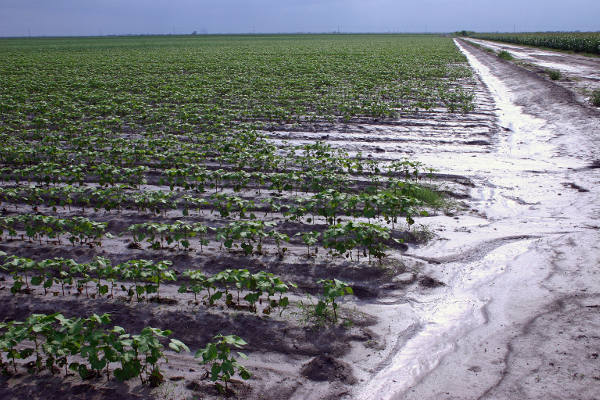June 19, 2013

A total lack of irrigation water, whether by drought or international politics, would amount to agricultural losses in South Texas of almost $400 million annually and the loss of almost 5,000 jobs, according to an expert with the Texas A&M AgriLife Extension Service.
“Obviously, irrigation water is very important to agricultural production in the four-county Lower Rio Grande Valley,” said Dr. Luis Ribera, an agricultural economist at the Texas A&M AgriLife Research and Extension Center at Weslaco.
“Roughly half of the crop production here is irrigated by the Rio Grande,” he said. “Without irrigation water, whether by drought, an unpaid Mexican water debt or a combination of both, the economic cost is very high for this region.”
Texas Agriculture Commissioner Todd Staples agreed, saying Ribera’s analysis provides a dire warning about the effects water shortages are having on extreme South Texas.
“We appreciate the work AgriLife Extension has put into this analysis,” he said. “It is clear proof that agriculture, businesses and residents in the Lower Rio Grande Valley are suffering. We believe the International Boundary and Water Commission has tools to compel Mexico to fulfill its obligations before the water debt becomes unmanageable.”
Staples said that if Mexico began fulfilling its obligations today, “it would go a long way toward lessening the impact this man-made drought has on farmers, ranchers and cities in the Rio Grande Valley.”
To determine the value of irrigation water, Ribera said he calculated all crop production as if it were planted dryland.
“The total value of agricultural production in the Valley amounted to $820 million in 2012,” he said. “The majority, or 81.2 percent of that, $666 million, comes from the production of crops, including feed grains, cotton, sugarcane, vegetables, citrus and other miscellaneous crops. The remainder is made up of livestock production and other ag-related production.”
By knowing the production difference between irrigated and dryland crops, Ribera extrapolated those losses across irrigated acreage.
“Without irrigation water, irrigated crops would produce the lower yields, causing a reduction in farm gate receipts of $31.2 million for cotton, corn and sorghum,” he said. “Specialty crops, which include citrus, vegetables and sugarcane, cannot be grown on dryland fields, so total losses there would amount to $221.4 million.”
If you are enjoying reading this article, please check out Southwest Farm Press Dailyand receive the latest news right to your inbox.
Since specialty crops growers would likely switch to dryland row-crop farming, Ribera added $23.4 million to the mix.
“There would also be indirect and induced losses,” he explained. “Indirect costs would be money not spent on crop inputs like fertilizers, equipment and fuel. Induced losses represent the economic impacts associated with the spending of salaries and wages on household goods.
In addition, 4,840 jobs would be lost, Ribera calculated.
“Total projected losses associated with a lack of irrigation water in 2013 would amount to $394,896,481,” he said. “Each year thereafter without water would be adjusted accordingly, but obviously losses would be staggering for our economy.”
Ribera noted that actual losses could be higher.
“This analysis represents the impacts of all economic activities that occur in the production of the Valley’s crops up until the point of their sale at the farm level,” he said. “Therefore, these results are on the conservative side because they do not include the losses that occur beyond the farm-level sales, such as transportation, storage, processing, packaging and marketing.”
Ribera said water shortages have become more commonplace in South Texas in the last two decades.
“Irrigation water shortages have occurred here since the mid-1990s,” he said. “These began after 1992 when Mexico began undersupplying the average minimum annual amount of 350,000 acre-feet of water into the Rio Grande as per a 1944 treaty, and those shortages continue today.”
You may also like:
$250,000 endowed professorship allows NMSU researchers to continue drought-tolerance…
Additional drought relief funding to Texas landowners
Cotton and corn production estimates lower in latest WASDE report
You May Also Like




